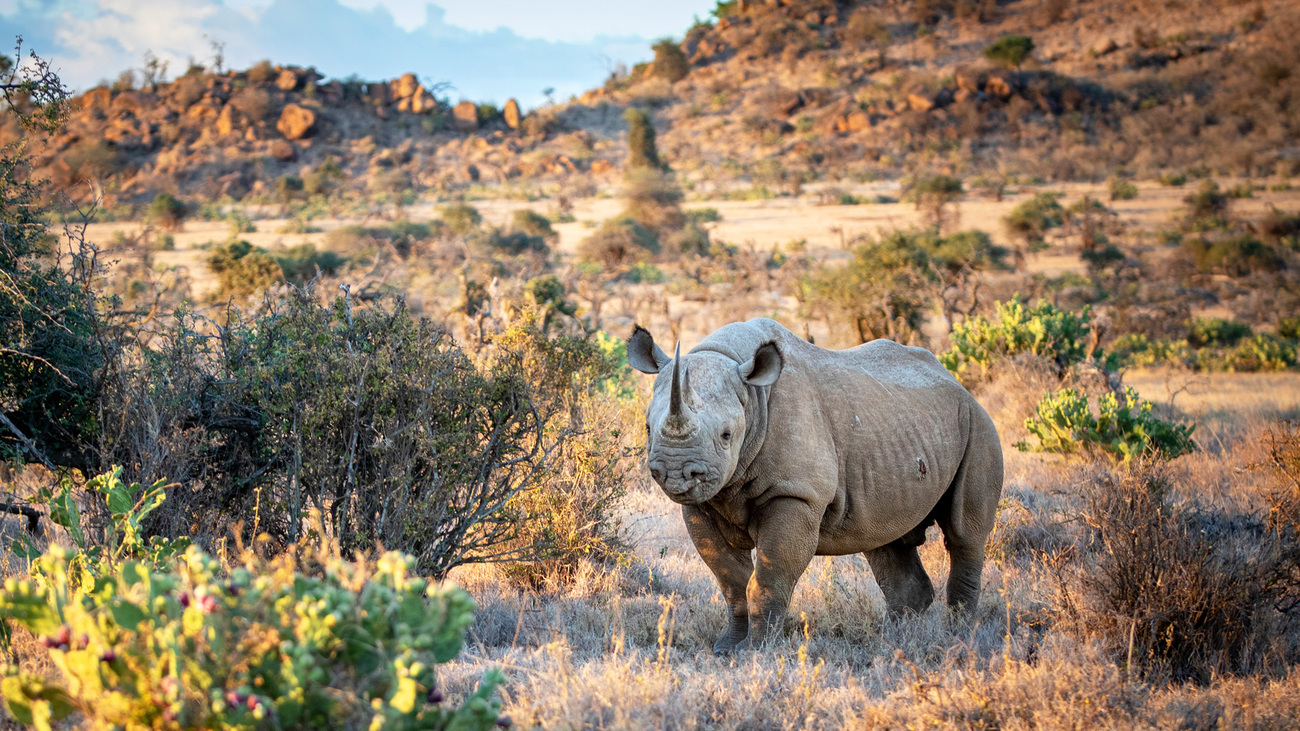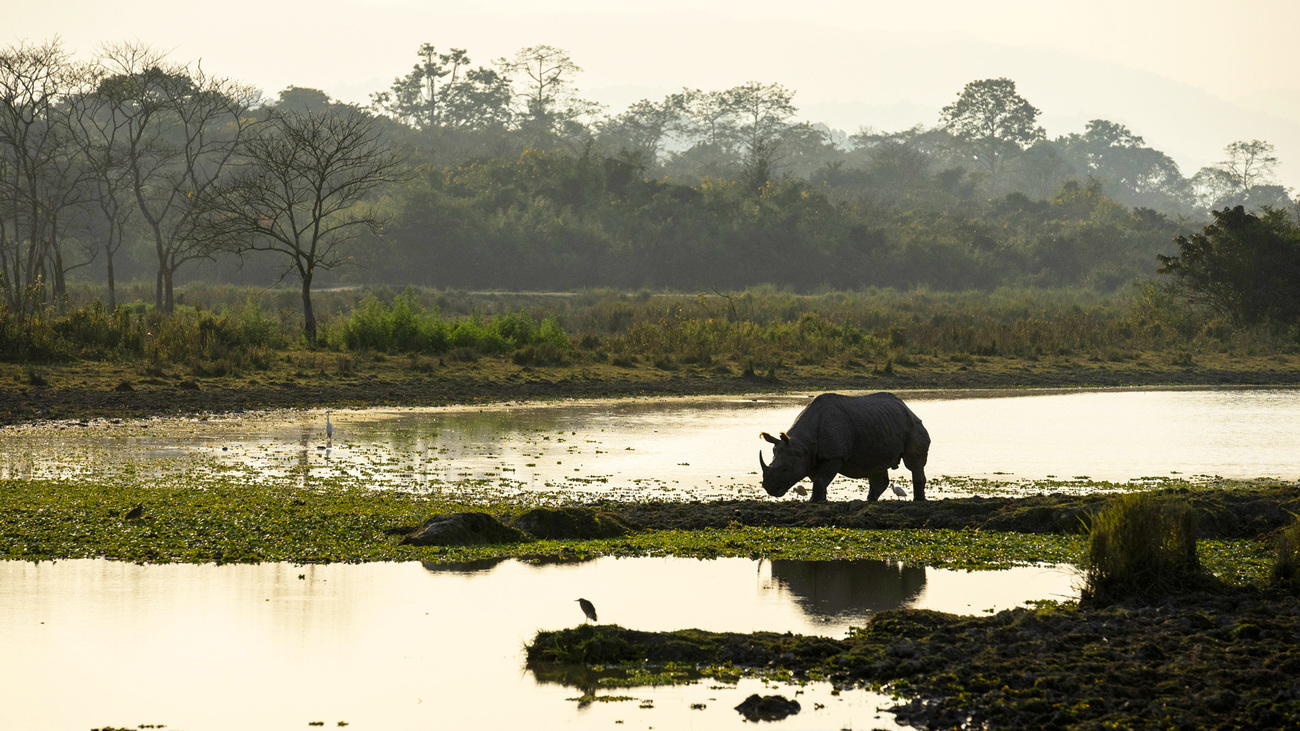The future of rhinos—a mix of hope and deep concern
The future of rhinos—a mix of hope and deep concern
By Peter Borchert
Across Africa and Asia, the fight to save the world’s rhinos remains one of conservation’s greatest challenges. Today, an estimated 26,700 rhinos roam the Earth—22,540 in Africa and 4,200 in Asia. That’s a small increase since 2021, yet still only a fraction of the 500,000 that once roamed both continents at the start of the 20th century.
The newly released 2025 CITES report on African and Asian Rhinoceroses, compiled by the IUCN Rhino Specialist Groups and TRAFFIC, paints a picture of fragile progress and continued deep concern for these ancient giants. Some populations are stabilising or slowly increasing, while others hover at the brink of extinction. Habitat loss, climate change, and the illegal horn trade remain the greatest threats—underscoring the need for sustained conservation and strong community partnerships.

Africa’s rhinos: some gains but big challenges
At the end of 2024, Africa’s rhino population stood at 22,540, including 6,788 black and 15,752 white rhinos. A further 214 black rhinos and 1,299 white rhinos lived in zoos and other facilities worldwide.
Black rhino numbers grew by 5.2%—a hard-won victory for rangers, scientists, and community custodians. However, the white rhino population declined by 11.2%, mainly in South Africa and Namibia.
Most African rhinos now live in small, fenced populations scattered across fragmented landscapes. Drought, policy changes, and funding shortages make management increasingly complex. Yet there are reasons for optimism—new calves born in community conservancies, expanding ranges in Kenya and South Africa, and greater regional cooperation to combat poaching.
These stories reflect a truth at the heart of IFAW’s work: when people are empowered to protect and benefit from the presence of wildlife, rhinos endure.
Connecting habitats through Room to Roam
Connecting habitats is central to IFAW’s Room to Roam vision. When wild animals can move freely across healthy, connected landscapes, they become more resilient to environmental pressures and climate extremes—and so do the communities who share these spaces.
Asia’s rhinos: success and struggle
In India and Nepal, the greater one-horned rhino continues its remarkable recovery, rising to 4,075 individuals—up from just 100 a century ago. Political commitment, effective law enforcement, and community stewardship have transformed its outlook.
In Indonesia, however, the future of the Javan and Sumatran rhinos remains perilous. Between 2019 and 2023, 26 Javan rhinos were killed for their horns, leaving only about 50 surviving in Ujung Kulon National Park. The Sumatran rhino fares little better, with only 34–47 individuals remaining in fragmented forest habitats. Captive-breeding programmes and habitat protection offer hope, but their survival depends on constant vigilance and investment.

Poaching and illegal trade—the threat persists
Poaching remains the most immediate danger. Between 2021 and 2023, an estimated 676–853 horns entered the illegal trade annually. Though this is lower than earlier years, much of the decline reflects dehorning programmes rather than a true reduction in poaching.
South Africa continues to be the epicentre, accounting for around two-thirds of global horn seizures. Trafficking routes are evolving—shipments now move through Malaysia, Viet Nam, and increasingly through Qatar, the UAE, and even Mongolia.
There are some hopeful indicators: by 2023, the number and total weight of seized horns had dropped by over 75% since 2019, thanks to enhanced collaboration among customs and wildlife-crime units.
Counting the horns
Managing rhino-horn stockpiles remains a challenge. African nations collectively hold between 36.2 and 85.1 tonnes of horn, with South Africa accounting for up to three-quarters of this total—much of it privately owned. In 2024 alone, more than 700 horns were stolen, exposing security and transparency gaps. Strengthened oversight and secure storage are critical to prevent stolen horns from re-entering illegal markets.
Poaching trends—room for cautious optimism
In 2024, Africa recorded 516 poaching incidents, the lowest total since 2011 and down from 540 in the previous assessment. While encouraging, this still represents an annual loss of 2.15% of the continental population—too high for sustainable recovery. To achieve growth, losses must drop below 1.2% annually.
A worrying spike in early 2025, when 91 rhinos were killed in South Africa in just three months, underscores the urgency of continued protection and funding.
Money matters: the economic engine of conservation
Rhino conservation is costly but invaluable. Well-managed populations anchor nature-based tourism, create jobs, and strengthen local economies.
Between 2022 and 2024, 276 live rhinos were traded legally, primarily for conservation translocations. A small number of trophy hunts occurred under tightly regulated quotas, generating revenue for community development and anti-poaching operations.
Innovative finance mechanisms are reshaping conservation funding. The World Bank’s Wildlife Conservation Bond (“Rhino Bond”) mobilised over US$150 million for black rhino conservation in South Africa—linking investor returns to population growth. It’s a promising model for future conservation finance.
People, partnerships, and the path forward
The new African Rhino Conservation Framework (2025–2035) marks a shift from fortress conservation to inclusive, community-centred management. This approach recognises that Indigenous peoples and local communities are essential partners in protecting rhinos and their habitats.
At its core, IFAW’s Room to Roam embodies this philosophy. We work with people closest to wildlife to co-design solutions that support coexistence, improve livelihoods, and secure connected landscapes where rhinos—and communities—can thrive.
From Africa’s community conservancies to India’s floodplains and Indonesia’s forests, one lesson is clear: when conservation brings tangible benefits to people, wildlife has room to roam and a reason to stay.
Rhinos have survived dramatic environmental shifts for more than 50 million years. With continued commitment, collaboration, and creativity, they can endure far into the future.
Related content
Our work can’t get done without you. Please give what you can to help animals thrive.